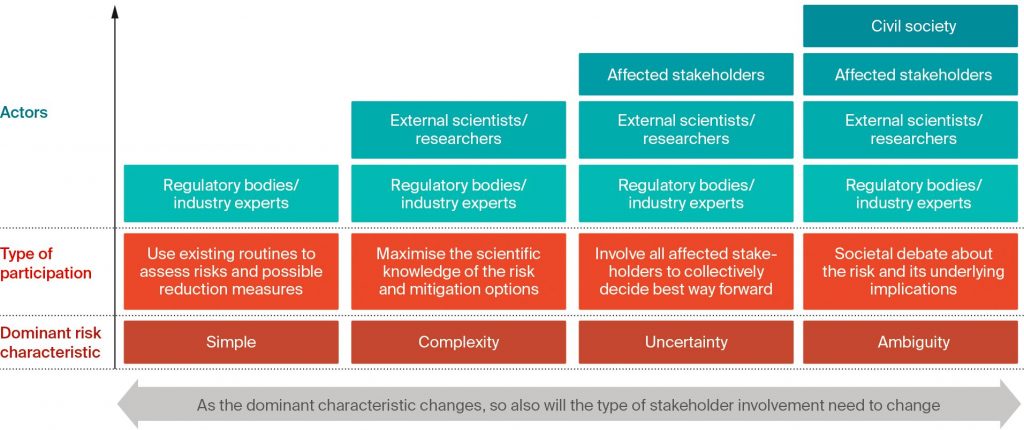Stakeholder involvement is a key component of the IRGC Risk governance framework. Engaging with stakeholders is helpful for assessing risk perception, concerns and opinions, for evaluating factors that influence decision-making, and for effectively managing risks.
In order to help risk assessors and risk managers make sense of the various facets of when and how to involve stakeholders, IRGC and expert partners at IASS have produced the guidance document “Involving Stakeholders in the Risk Governance Process”.
The guide:
- Defines stakeholders and explains the importance of involving them in risk governance
- Outlines key objectives that engaging with stakeholders can help achieve
– Communication (increasing literacy, suggesting behavioural change)
– Consultation / feedback (viewing a representation of public preferences, seeking informed consent)
– Deliberation / co-determination (obtaining self-commitment, engaging in co-regulation/management( - Provides general principles and methods on how to involve stakeholders
- Offers some examples of successful stakeholder involvement in risk governance
In relation to IRGC’s risk governance framework, actors and stakeholders that must be involved depend on the dominant characteristic of the risk. Is the knowledge about the risk simple, complex, uncertain or ambiguous?


Additional and complementary information can be found in the Introduction to the IRGC risk governance framework.
Download:
